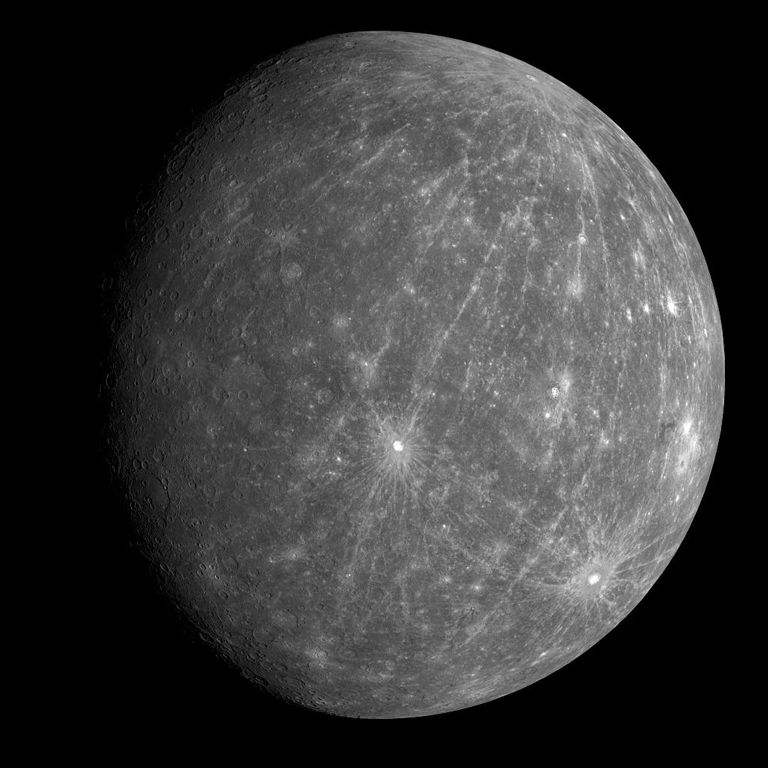Among the terrestrial planetssolar systemAnd Mercury is an exception. In its contrasting interior in a silicate shell and metallic core, the latter accounts for three-fourths of its total mass! Much higher in the case of Venus and Earth – a third – as in Mars – a quarter. Even more surprising is its density, given the generally higher iron content, which exceeds all other planets. To explain this difference, two theories followed each other. The first imagined a gradient in the fraction of iron available to form planets depending on the distance from the sun. The vision was later replaced by the idea of collision(s) that blew up Mercury’s rocky mantle. However, a new paradigm appears to be dusting off the oldest theory by tilting in its favour. But has the mercury iron mystery really been solved?
The young sun’s magnetic field. The solar dynamo creates a strong magnetic field (green lines) that attracts magnetic iron-rich particles to the Sun in a planetary accretion disk. Source: NASA / JPL-Caltech.
The young sun’s magnetic field
Researchers at the University of Maryland and Tohoku University have developed a model that represents the chemical composition of the planets as a function of heliocentric position. As a starting point for their study, they postulated that the planet’s density, mass, and iron content varies with the distance between it and the solar magnetic field. More precisely, about the young Sun, during the period when the planets were still forming in a protoplanetary disk. “The Sun is made of plasma, which is highly conductive, capable of supporting and amplifying the magnetic field,” describes Joao Pedro Marquez, lecturer at IAS and University of Paris-Saclay. However, it has been shown that macroscopic motions such as convection or rotation amplify them further, which is called the dynamo effect. That is why young stars, rotating very quickly on themselves, have a strong magnetic field. But this electromagnetic dance is actually a waltz, in which the partner of the solar star is only the disk that surrounds it …
Just like a spinning disk, the sun is absorbed in plasma, through which electric currents pass. “These two astrophysical bodies interact and create instability in the disk,” notes the astrophysicist. The resulting magnetic field will attract the iron particles toward the center of the solar system, producing a gradient visible on both planets and meteorites. Then, the accumulated iron sinks into the core under the influence of gravity, at the same time pushing the lighter oxygen out. But is this process enough to get an iron core like Mercury? I’m not quite sure according to Joao Pedro Marquez: “Such a scenario does not rule out the addition of a celestial collision, because Mercury still contains a lot of iron!”.
How Mercury Credits Was Formed: Left: NASA/JPL-Caltech Right: Reprinted with permission from Macmillan Publishers Ltd: Nature [4737348: 460-461,© 2011]NASA.
From iron to earthly life
However, the findings presented by the researchers raise questions according to Matthew Finsendon, who is also a lecturer at IAS and the University of Paris-Saclay. Thus, the planetary orientation presented in the research mainly depends on the state of Mercury, which stands out clearly in terms of intensity. The scale used also oddly flattens the state of Venus which, contrary to the scenario defended, is less dense than Earth – but more distant. A problem that seems to be solved by the unexpected absence of Venus in several characters… but that’s not the only anomaly to count. “According to this model, the formation of Mercury will be completed in just two million years, which seems fast,” notes Matthew Finsendon. In addition, the migration of giant planets should be the source of important motions of matter, which would distort the appearance of the gradient. Reasons to wonder accumulate… However, there is one point in particular that looks promising: the state of the exoplanets.
To validate their findings, the researchers suggest observing other stellar systems similar to ours, in order to see if the planetary iron gradient in our system is located elsewhere. If the density of the planets decreased with distance from the star, they would be right…really? “There are still potential biases. Perhaps near the star, the outer layers of the planet are likely to fade away after the collision, in which case the Mercury collision theory remains plausible,” the astrophysicist suggests. With its unusual core, Mercury is one of the rare planets that still has a magnetic field. The core of a planet is really crucial to supporting life… as we know it! The blue planet therefore has a magnetosphere through the liquid part of its iron core. Cosmic rays refract there before they can seriously harm the health of living organisms. What if life existed without a magnetic field? With organisms that live exclusively underground, or are resistant to radiation. Matthew Finsendon insists: “If there is life, it has to adapt as much as possible to its developmental environment.”

“Music guru. Incurable web practitioner. Thinker. Lifelong zombie junkie. Tv buff. Typical organizer. Evil beer scholar.”


![[IMAGES] Someone tries to set himself on fire outside Trump's courthouse](https://m1.quebecormedia.com/emp/emp/Capture_d_cran_2024_04_19_134909afe99a84-cf29-4f06-9dc2-9eb9ce265b46_ORIGINAL.jpg?impolicy=crop-resize&x=0&y=201&w=1074&h=604&width=1200)





More Stories
Taste the first Canadian pizza to go into space
The Air and Space Forces want a “modular” plane to replace the Alphajet
Spain confirms that it is holding talks with Morocco